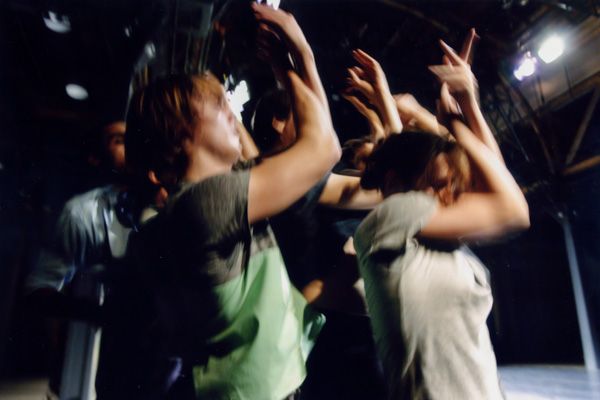When I first became interested in complexity theory in the early 90s I could instantly see how it might apply to dance, although it took some time to work out my ideas.
The basic motivation is that a choreographer can only overlook a certain amount of complexity, which is why the spatial organization of most choreographed ballets is more or less the same. With more time it is possible to create more intricate patterns, but even then the spatial variability is limited by the fact that relations between dancers have to be communicated to the dancers.
One of the tenets of complexity theory is that a central governing agent is not necessary for the emergence of intricate patterns or cooperative behaviour. However, simply transferring the rules that govern, for instance the flocking of birds or traffic jams, to dance doesn't work. These rules only apply under certain conditions. One would therefore have to develop rules specific to dance.
Perhaps I should emphasize that EVERY choreography is governed by a set of IMPLICIT rules. By making those rules EXPLICIT their hidden potential in the form of alternative forms of organization can be revealed.
So far I have not explained what I mean by either "complex" or a "complex system". A complex system can be defined as a system in which many different components interact, whereby the properties of the individual components do not fully explain the properties of the system as a whole. A principal characteristic of complex systems is the coupling between component parts and system, or between individual and group.
When I speak of complex I have a specific definition in mind, which derives from the notion of algorithmic complexity. The algorithmic complexity of an object is defined as the length of the shortest program (or description) which generates the object. Take the following sequences of numbers: 000000000000 and 010101010101. The first sequence can be succinctly described as a sequence of twelve zeroes while the second sequence can be described as six alternating 0's and 1's. Now consider the following sequence, which also consists of twelve digits: 001011110110. Presumably the shortest possible description of this sequence is the sequence itself. This last sequence can therefore be said to be the most complex.
If we apply this definition to movements it follows that constantly moving every conceivable part of the body may at first look complex, but is in fact quite simple: the task move every conceivable part of the body will produce a series of sequences that all look more or less the same. It's like watching a can of worms.
But why does complexity matter? This is where my interest in complex systems, self-organization and neuroaesthetics come together. In general it has been argued and demonstrated that people tend to find novel and complex objects and scenes interesting, as long as it is not too complex or totally novel.
The more complex a system becomes, the more information is needed to describe it, in terms of a choreography: the more instructions one has to give to the dancers. With more time it is possible to create more complex works, but even then there are limits as to what can be tried out. Although history provides a starting point each individual will first have to arrive at the complexity of previous works before being able to transcend it.
The literature on complex systems offers a different paradigm for bringing about complexity. This is what I have termed Emergent Choreography. The collective motion of birds, fish and bacteria and the movements of crowds of people can be described with models consisting of a set of simple rules guiding the behaviour of each individual agent and its interactions with other agents.
Simply applying these rules to dance and choreography only gets you so far. It works for having crowds assemble and disperse, but that is about it. Instead of applying complexity theory to dance, one would have to develop a complexity theory of dance. My own approach is to extract rules from the interaction of the dancers and to then generalize and re-insert those rules back into the dance and to see where a conflict or a "decision void" arises.
Publications
Hagendoorn, I.G. (2002), Emergent patterns in dance improvisation and choreography. In: Minai, A.A. and Bar-Yam, Y. [Eds.]. Unifying Themes in Complex Systems Vol. IV. Proceedings of the Fourth International Conference on Complex Systems, 183-195.
Hagendoorn, I.G. (2004), De wereld als wiskundig netwerk. De Academische Boekengids (in Dutch).
